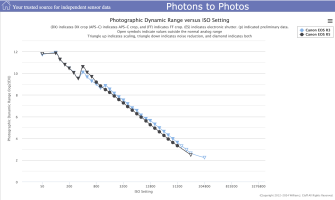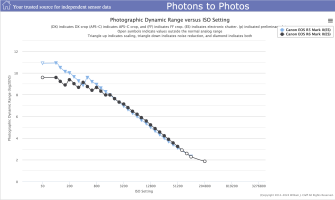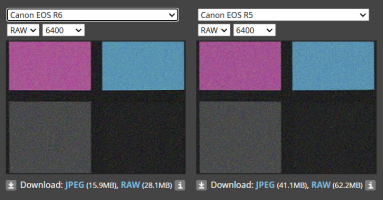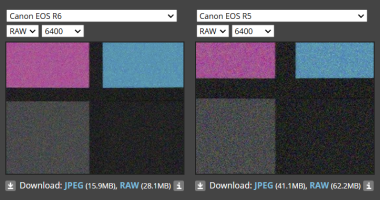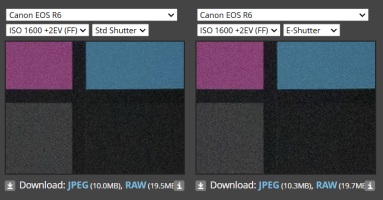It's truly remarkable how often,
@SvO2, the following DR plots have to be posted here to show your point.
I wasn't actually gonna reply to his post, but good thing this is the world wide web, and we all have access to the information.
First of all, you've just compared a camera shooting at 12 bit RAW (R6 Mark II) with another shooting at 14 bit RAW (R5 Mark II).
But that's not your fault, because your source claims that my camera shooting at 12 bit RAW (ES) has pretty much the same dynamic range as when shooting at 14 bit RAW (MS or EFCS), from ISO 1600 and beyond, and that couldn't be farther from the truth. I've been shooting the R6 for almost four years, and I specifically began changing to MS or EFCS when shooting at high ISO, once I discovered how much better the performance is (almost two f-stops better).
And they state the same for other models that drop to 12 bit on ES as well. That tells how reliable that source is.
The dxomark values definitely match a lot more the experience I have with these cameras. Those don't.
I said before, in this forum, that I've been waiting for a R6 with the ability to shoot 14 bit RAW in ES, and the dynamic range on high ISO with electronic shutter is the biggest reason (and rolling shutter, of course). In addition to my desire, I recently began shooting at a venue that requires silent cameras, the light there is crap, and it's been a PITA having to shoot at high ISOs needing high dynamic range, due to the lights in the ceiling being pointed directly at the musicians. I wouldn't have issues with mechanical or EFC shutters, and sometimes there's one or two spots where I can use them, but generally they don't allow me to make noise there.

